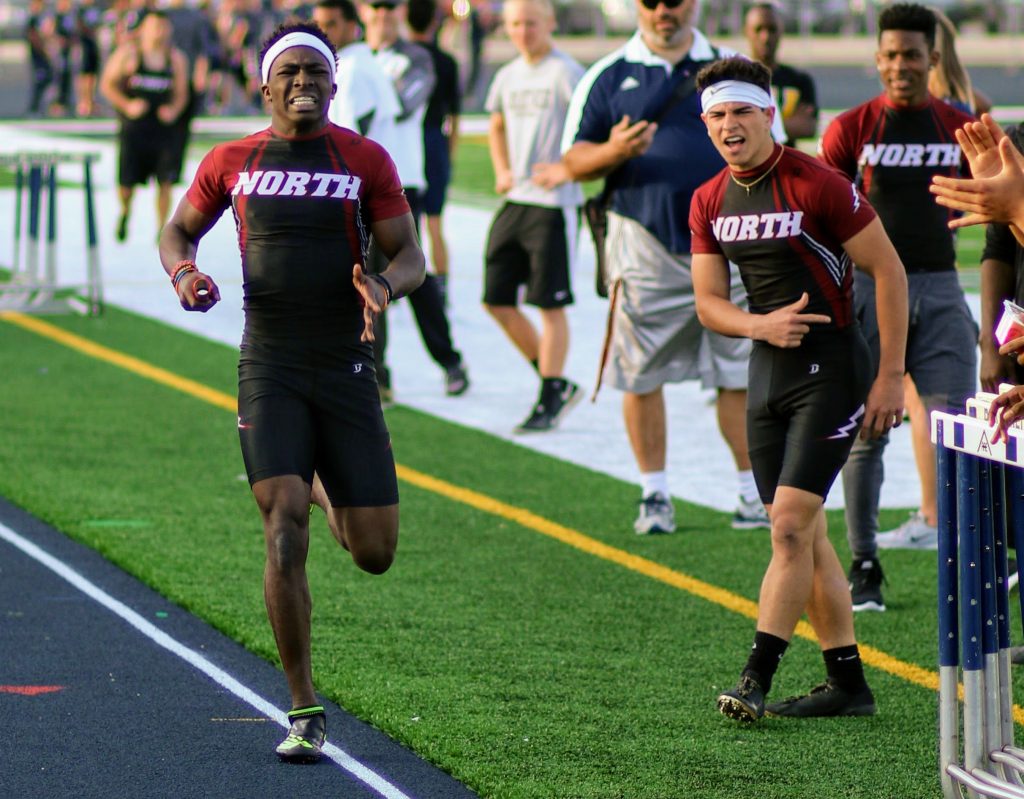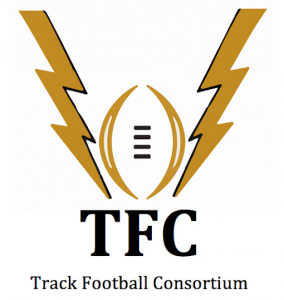
The 4×4 Predictor
I’ve taught science all my adult life, 37 years now. I tell my students, contrary to popular thought, science is not about what we know, science is about what we don’t know. Science is not about certainty, science is about uncertainty. Science is not about the past, science is about the future.
Science may explain why something happened in past, but that’s boring. When science predicts the future, the blood of a scientist is stirred.
There once was a man named Evangelista Torricelli (1643) who successfully created the first barometer (measures air pressure). The townspeople made him tear it down because whenever the water levels dropped, the weather turned bad. Torricelli eventually replaced water with mercury (13.7 times denser than water), allowing his barometer to be 13.7 times smaller (water rose 34 feet, mercury only 30 inches). Torricelli’s barometer was the first scientific weather predictor. The barometer doesn’t cause bad weather, it predicts it. (Low pressure causes water vapor to rise and cool.) Today, science can predict weather with amazing accuracy. We take it for granted.
Predictors in science are everywhere. In chemistry we know that ten grams of sodium bicarbonate, when heated, will decompose to produce 5.6 grams of sodium carbonate (10/94 x 1/2 x 96). The 2.3 grams of carbon dioxide produced causes cake batter to rise. We use stoichiometry to precisely predict the products of a chemical reaction. In chemistry, we can accurately predict the future based on the periodic table and simple math.
My science background has led me to the world’s most scientific sport. Like most boys, I was attracted to the “ball sports”. It seemed like everyone played football, basketball, and baseball. Track was a fringe sport for elite abilities and nerds who couldn’t make the football, basketball, or baseball team. Today, I’m attracted to the science & math of track & field, not the quasi-science of the ball sports. Biology, chemistry, and physics all play a integral role in track & field. Everything is precisely measured. Compared to the ball sports, track is totally quantitative while football, basketball, and baseball spin their wheels talking about effort, toughness, and the will to win. Ball coaches are all about the grind. Track is different.
In A Simple Plan, I explained how I micro-dose workouts for sprinters in a specific way. I explain how we sprint only three days a week and how we do lactate workouts only in season. Lactate workouts are scheduled only once or twice a week. Meets count as lactate workouts and lactate workouts count as sprint days. SPRINT DAYS + LACTATE WORKOUTS + MEETS = 3/WEEK. The other four days of a week should be spent sleeping (cats sleep 20 hours a day) or doing non-sprint, micro-dosed, alternative work (I call these X-Factor days).
I’m always trying to add meaning and significance to sprinting. Pictures, videos, and tweets are central to my plan. Record-Rank-Publish is the heart and soul of “Feed the Cats”. A few years ago, my science merged with my coaching and I invented lactate workouts that predicted future outcomes.
450m 4×4 Predictor
The 450m 4×4 Predictor is a ten-minute high-speed lactate workout. I love it. We run three 150m flys wearing spikes. We time with Freelap. You can time with a stopwatch if you have someone dropping a hand as the runners, together, cross the starting line. We run in groups of three, with no more than five groups (any more and you will have too much rest). If you have 30 sprinters, you will conduct two ten-minute workouts. 45 sprinters will take you 30 minutes. The rest between sprints is the time it takes to walk back to the starting line (3-4 minutes). We always run with the wind. We use either the first 150 or the second 150 of the 300 hurdles (the fourth hurdle is the 150m mark). Try to do this workout in decent weather. We also try to keep lactate workouts as far away from meets as possible. Lactate workouts have a 48-hour hangover.
I define lactate work as doing a sprint of more than ten seconds and then repeating it with enough rest to run fast again (minimum is goal-400 pace). Complete rest ruins the objective of the workout. If you don’t see “zombie eyes” and some dizziness due to acidosis, then your kids are not running fast enough or they are getting too much rest. (Lactate production is accompanied by hydrogen ions which cause acidosis). Sprints of less than ten seconds can work if the rest is extremely short. Recently we did a 440 yard shuttle (11 x 40 yards with only 15 seconds rest). The entire 440 yard workout (group of four) took only four minutes (this is a terrific hallway or gymnasium lactate workout).
Some coaches wonder why we don’t do two or three sets of 3 x 150? The answer is “hormesis”. The answer is minimum effective dose. If you have an expensive steak, always err on the side of under-cooking it. Don’t burn the steak! Don’t crush your athletes. Broken athletes are like burnt steaks.
This 3 x 150 in spikes with 3-4 minutes rest is a terrific lactate workout if your kids go hard. I tell my guys to run like they are running the first 150 of the 4×4 at the state track meet. Tell your kids to run all three about the same. Fast and loose but definitely fast. Make it look easy but make sure it’s a sprint. We do this workout to improve lactate clearance and tolerance. However, the biochemical benefits are just part of the story. This workout teaches sprinters how to run the 400. If you run the first 150 too fast, your next two will be train wrecks. If you run the first 150 too slow, your 400 prediction will embarrass you. Damn, that’s just like the 400! Go out too fast, you die. Go out too slow, you’re embarrassed. This is a learned process. Why wait until the meets?
Record, rank, and publish the three times of each athlete. When you record, rank, and publish, you are feeding the cats.
You want to take it one stop further? What if you added the three 150m times and called it a “4×4 Predictor”? The results are spectacular. Your athletes will run like champions. If they still seem lethargic and unmotivated, get rid of them.
Simply add the three times. If someone goes 16-16-16, they can run a 48.0 split on the 4×4. 17.5-17.5-17.5 would add up to 52.5. Remember, fly-start and with the wind.
Last year we did this workout three times. Below you will find my eight best 4×4 guys from last year. The first number is the predictor, the second number is their PR split from the season.
Marcellus Moore 48.0 – 49.4
Carlos Baggett 49.1 – 51.4
Jordan Gumila 51.1 – 51.1
Zach Thornton 50.4 – 51.0
Anthony Capezio 50.7 – 50.4
Tim Donnahue 51.9 – 50.9
Brian Registe 52.6 – 52.0
Canyon Bownes 52.7 – 53.3
Marcellus only ran the 4×4 twice last year. He ran it in early April at Belleville West a few minutes after running 21.28 in the 200. He cruised a 52.2. In late April, Marcellus anchored a 4×4 at a Monday triangular at Plainfield South. His time was 49.4 and we ran 3:23.8 without competition.
On the day Marcellus ran his 48.0 predictor, the wind was blowing 15-20 mph (I love over-speed training!). Marcellus ran 16.8, 16.2, and 15.2. Marcellus ran this workout on May 6th. On May 11, 19, and 26, the age-14 Marcellus Moore ran 10.48, 10.48, and 10.40 in the 100m. I believe Marcellus Moore will someday run this workout in 15.5 – 15.5 – 15.5. When that day comes, he’s ready to run 46.5 in the 4×4.

Sure, you can endurance-train in an attempt to make the 4×4 “easy”. I prefer to sprint-train to make the 4×4 “fast”. Marcellus ran 49.4 here in his 2nd and final 4×4 of the season (age-14). The pain is real.
All of my practice rankings, results, links, etc. can be found at pntrack.com. If you want just practice rankings, go to Practice Rankings.
600m 4×4 Predictor
This was my original 4×4 Predictor. Last year I experimented with the reduced version early in the season and loved it. The 3 x 150 allows an almost full sprint. Speed is a good thing. I struggle with sub-max training. I think there’s benefit to both the 3 x 150 (faster) and the 3 x 200 (harder).
A friend recently sent me a lactate workout of 8 x 200 at 26 seconds with two minutes rest. That’s a high-volume speed-endurance workout for a college 800 runner. The difference between 3 x 200 @23 R-4 and 8 x 200 @26 R-2 is like night and day. 8 x 200 is too much, too slow, and too stupid. Stop plugging high school athletes into dumb college workouts.
The 600m 4×4 predictor is the same as the 450 4×4 predictor, just longer. Five groups of three, fly-start, with the wind (more the better), diagonal walk across field is rest (3-4 minutes). Again, run each one at around the same pace. How fast? Run like the opening 200 of the 4×4 at state. Don’t blast the first one and trudge through the next two. But then again, don’t take it easy.
The formula is not as simple as adding the three. Basically, you figure out the 400 pace and add two seconds. For you math guys, [(sum x 0.67) + 2. Example: 24-24-24 would calculate to 50.0. 26-26-26 would predict a 54.0 4×4.
We did this workout twice last year, March 20th and April 20th. It’s a killer. If you don’t know what the “lactate war zone” is, you will after this workout. No one will be left standing. Fetal position. Zombie eyes.
Below you see my top 4×4 guys from last year with their predictor followed by their actual split.
Marcellus Moore 48.4 – 49.4
Carlos Baggett 49.5 – 51.4
Jordan Gumila 50.1 – 51.1
Tim Donnahue 50.3 – 50.9
Zach Thornton 50.4 – 51.0
Anthony Capezio 50.7 – 50.4
Brian Registe 52.2 – 52.0
Canyon Bownes 53.3 – 53.3
If you are really paying attention, you may wonder … Why did Carlos Baggett have senior-year predictors of 49.1 and 49.5 but his best split was only 51.4? Well, Carlos ran 50.6 as a sophomore and 49.3 as a junior. He was the real deal. His junior year was cursed with season-long turf toe. Carlos had eligibility problems as a senior (59% in AP Physics for six weeks). Due to his tremendous value to the team as a sprinter (conference champ in 100m as a junior), we didn’t run Carlos in the 4×4 until sectional. Our Sectional had beautiful weather until a front moved in late in the meet bringing freezing temperatures and high winds. It was so bad, Marcellus ran his slowest 200 of the year, 22.33 (exiled Marcellus to lane-8 in the state prelims). Carlos ran 51.4 at Sectional in terrible conditions for his only 4×4 split of the year. No doubt in my mind Carlos runs 49-low on a decent night.
Our school record in the 600m 4×4 Predictor is held by 2016 MVP Hunter Houslet. On March 22, 2016, Hunter Houslet ran 23.2 – 23.2 – 21.6 in 20 mph winds. Add it up, multiply by 0.67, and add 2.0 = 47.6. Holy shit! This guy had a 4×4 best of only 53.2 as a junior. Either my predictor was messed up or Hunter was the real deal. Hunter went on to split 48.8 in the 4×4 that year. Hunter Houslet also ran on a 41.72 4×1 team and split 21.3 in the 4×2.

Hunter Houslet is on the far right. This team was IL #1 in the indoor 4×2 (2016). Hunter was a soccer player and only ran track as a junior and senior.
Is the predictor perfect? No, but neither is science. Uncertainty stirs my blood.
Even if my algorithm is flawed (and it’s not!), athletes will run fast and fight through the acidosis that accompanies high lactate levels. In addition, they will learn how to run the 400.
Don’t forget to Record-Rank-Publish.

Albert Einstein once said to Neils Bohr, “Does the moon exist when no one is looking at it?”
Quality workouts don’t exist without amplified meaning and significance. I remember running a 67.1 in the 440 in my first race (Streator, IL, 1972). I remember running a PR 58.2 as an eighth-grader on a cinder track (Princeton, IL, 1973). I remember running a 50.2 4×4 split in my last race as a high school senior at Oswego in 1977. Why do we remember races but not workouts? I believe it’s all about meaning and significance. Most track athletes go through the motions at practice. When we detach from the experience, it’s almost as if our experience didn’t exist, like Einstein’s moon. The 4×4 predictor will focus athletes on the proverbial moon, making it exist. Record-Rank-Publish amplifies the experience.
No one gets better just going through the motions. Without meaning and significance, it’s just mindless running.
#FeedTheCats
+++
Tony Holler (630) 849-8294, tony.holler@yahoo.com
+++
Holiday package deals…
Feed the Cats Track Bundle – 50% off the Feed the Cats Certification Track Package
Feed the Cats Football Bundle – 50% off the Feed the Cats Football Package
Want all the Feed the Cats stuff (track, football, speed)? Get them all for only $255. Click here.


Tony your love of science and all things T&F comes through in your writings. Thanks for sharing! Can’t wait to try the 11×40 lactate workout!
Thanks Al! Good luck to the Saline Hornets in 2018.